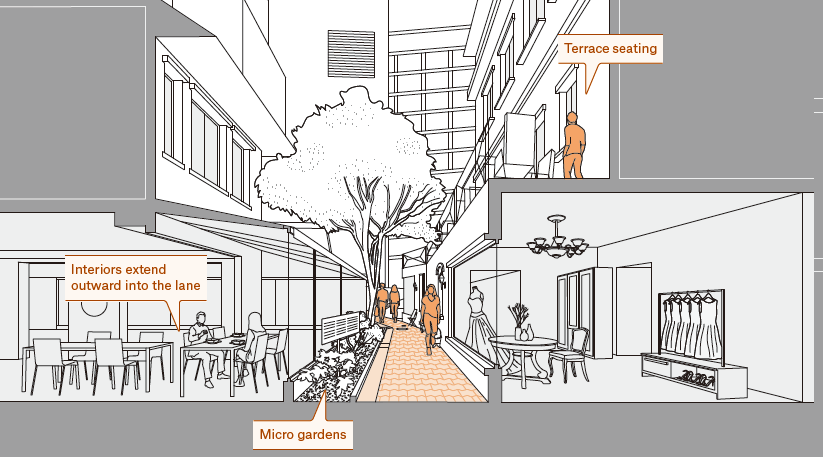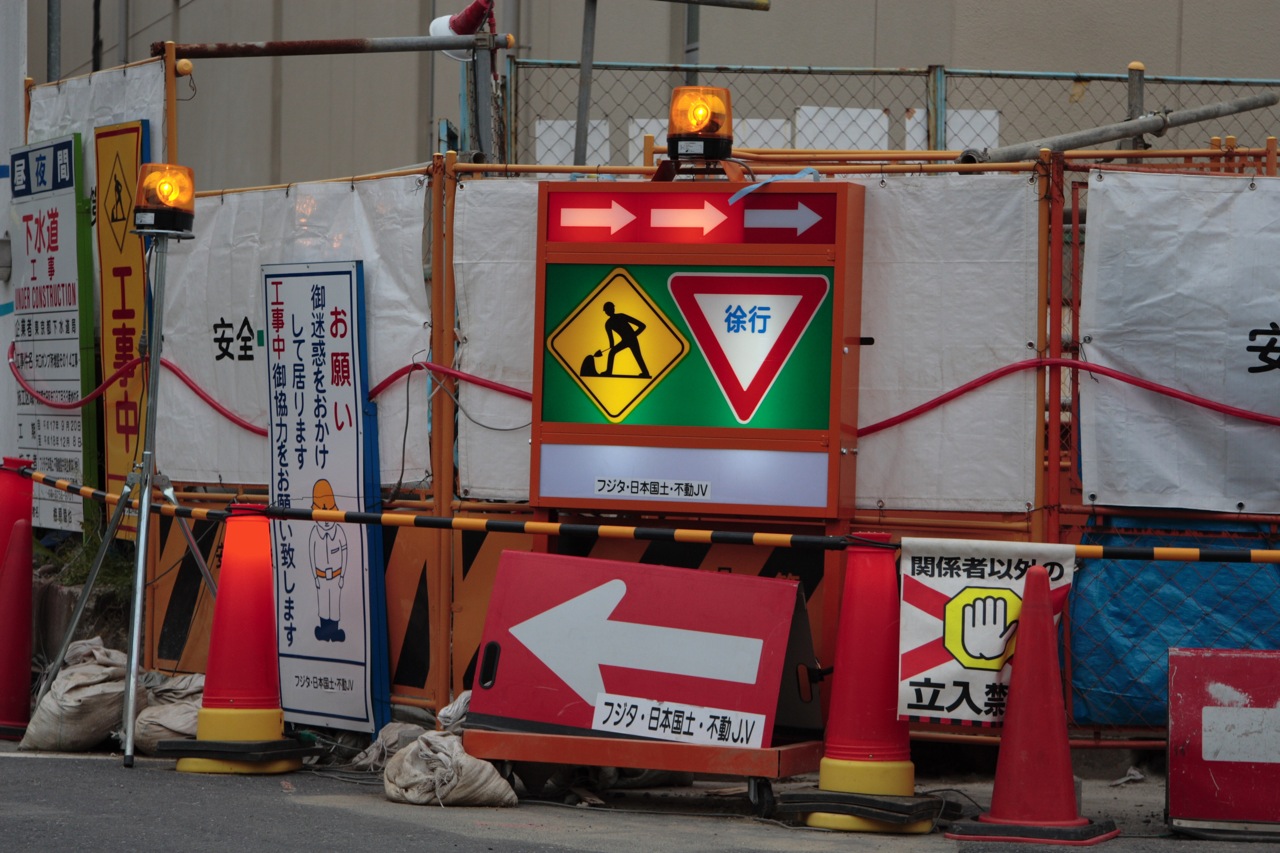Physical Address
304 North Cardinal St.
Dorchester Center, MA 02124
Physical Address
304 North Cardinal St.
Dorchester Center, MA 02124

As foreigners, we are mesmerized by zakkyo buildings or yokocho, but within Japan, scholars, and authorities often ignore and neglect them as urban subproducts. In spite of their conspicuous presence and popularity, the official discourse still considers most of Emergent Tokyo as unsightly, dangerous, or underdeveloped. The book offers the Japanese readership a fresh view of their own everyday life environment as a valuable social, spatial, and even aesthetic legacy from which they could envision alternative futures.

American YIMBYs point to Tokyo as proof that nationalized zoning and a laissez faire building culture can protect affordability. But a great deal of that knowledge can be traced back to a classic 2014 Urban Kchoze blog post. As the YIMBY movement matures, it's time to go books deep into the fascinating details of Japan's land use institutions.

Over the past few years, Japanese zoning has become popular among YIMBYs thanks to a classic blog post by Urban kchoze. It’s easy to see why: Japanese zoning is relatively liberal, with few bulk and density controls, limited use segregation, and no regulatory distinction between apartments and single-family homes. Most development in Japan happens “as-of-right,” meaning that securing permits doesn’t require a lengthy review process. Taken as a whole, Japan’s zoning system makes it easy to build walkable, mixed-use neighborhoods, which is why cities like Tokyo are among the most affordable in the developed world. But praise for Japanese zoning skirts an important meta question: Why did U.S. zoning end up so much more restrictive than Japanese zoning? To frame the puzzle a different way, why did U.S. and Japanese land-use regulation—which both started off quite liberal—diverge so dramatically in terms of restrictiveness? I will suggest three factors; the first two set out the “why” for restrictive zoning and the third sets out the “how.” Any YIMBY efforts to liberalize cities in the long term must address these three factors. First, the U.S. privileges real estate as an investment where Japan does not, incentivizing voters to prohibit new supply with restrictive zoning. Second, most public services in the U.S. are administered at the local level, driving local residents to use exclusionary zoning to “preserve” public service quality. Third, the U.S. practice of near-total deference to local land-use planning and widespread use of discretionary permitting creates a system in which local special interests can capture zoning regulation and remake it around their interests. At the outset, why might Americans voters demand stricter zoning than their Japanese counterparts? One possibility is that they are trying to preserve the value of their only meaningful asset: their home. In the U.S., we use housing […]
So this weekend we learned that condos are bizarre and pretty much guaranteed to cause problems in the longrun, when maintenance bills skyrocket, the buildings are out of date, and the land beneath them appreciates, but you can’t redevelop the property because all the owners will never agree. You guys posted some great comments, but I wanted to highlight a few. This weekend we learned that Singapore has a method called “en bloc” redevelopment, whereby a condo building can be sold in its entirety to a single developer, with the idea that he’ll soon tear it down, if 90 (now 80) percent of the building agrees. Canada, on the other hand, is just starting to deal with the issue, but so far the only option for redevelopment is going to court – much messier compared to how it’s done in Singapore. And today, Japan and Israel! Turns out they’re dealing with the issue of aging condos pretty much the same way as Singapore. First comes Philip Brasor’s comment about Japan. Philip has a great blog and writes a column for the Japan Times about real estate in the country. In his comment he sums up a JT article he wrote on the topic which covers pretty much everything you wanna know about redeveloping condos in Japan: The problem is that many of the condos built in the 60s and 70s are now quite old, and unlike in the West, where it’s expected that property values will always increase over time, many in Japan are not worth much of anything unless they’re in the center of major cities. Until 2002, there was no specific law dealing with redevelopment of resident-owned condominium buildings, so if residents wanted to tear their building down and put up something new they had to gain 100% […]
Shinjuku Station, Tokyo Train stations in Japan are a lot of things. They are busy – Tokyo’s Shinjuku Station sees two-thirds as many passengers as the entire NYC Subway. They are complex – the big ones are shared by multiple railway companies, from public to private and everything in between.
I started reading Fogelson’s Downtown with the intention of learning more about elevated trains, and though I’ve been slightly disappointed in that regard (more to come on that after I finish and attempt a more comprehensive review), he does include a lot of interesting history. I’m posting this more so that I remember it, but the first paragraph offers an interesting rejoinder to those who say that els could never be viable because of the blight factor, and the Second Avenue elevated line makes a cameo towards the end: In view of the longstanding and deep-seated opposition to elevated railways, the construction of elevated highways is more than a little puzzling. This opposition has grown so vociferous that by the 1920s most Americans had come to believe that elevated railways should never have been built in the first place. Despite assurances by several leading engineers that it was possible to build els that were quiet, clean, and attractive (and would not reduce property values), they remained convinced that under no circumstances should any more be constructed. The cities should not only stop building elevated railways, many Americans insisted; they should start demolishing them. This idea, which had surfaced in the first two decades of the century, caught on in the 1920s, especially in New York and Boston. In favor of it were abutting businessmen and property owners, who believed that the removal of the els would improve trade and raise values. Allied with them were public officials (among them Julius Miller, borough president of Manhattan and chief advocate of the West Side Elevated Highway), who thought the demolition of the els would foster economic development; traffic experts (including New York City Police Commissioner Enright, another advocate of elevated highways), who assumed that the removal of the elevated structures would facilitate […]

For a libertarian urbanist blogger, I’ve always felt kind of embarrassed by my lack of knowledge about East Asian transit, considering that it’s the only place left on earth with a thriving competitive private transportation market (they even have profitable monorails!). I’ve heard good things about South Korea, Singapore, and Hong Kong, but it looks like Japan is really the world leader in market urbanism. I always found Japan’s post-WWII dynamism quite intriguing – despite its supposed lost decade and what I understand to be a fairly corporatist entrepreneurial model (in the end, they lost the tech innovation game to Silicon Valley), Japan has managed to remain an elite economic power. I have a (completely unfounded) theory that a lot of the dynamism comes from not having to carry the burden of a shitty, state-run transportation network and stunted land use market – as I understand it, private railway companies are pillars of the Japanese economy, similar to what the auto industry was to the US at its height. Anyway, I’ve been reading papers on Japan’s transit companies, and the first half of the abstract of this one I think sums up pretty succinctly the reasons why private transit (and, therefore, urbanism writ large) succeeds in Japan and fails in the US: In Japan, a liberalization policy was implemented over railways and buses in 2000 and 2002 respectively. Under that policy, quantity regulations for railways and buses were abolished, withdrawal regulations were eased, although fare regulations were maintained. However, even after this liberalization, institutional design remains considerably different between Japan and EU countries. An argument for competitive tendering is missing in Japan as 87.5% of rail passenger transport in the three major metropolitan areas is provided by profitable private railway companies that enjoy high social evaluation in respect to managerial […]
by Stephen Smith The Wall Street Journal ran an article a few days ago claiming that the MTA’s recent NYC transit cuts have lowered real estate prices along train and bus lines that have been axed. While it’s not a quantitative study, the anecdotes are compelling: “The buyer who buys in Astoria is looking for a cheaper price and to get into Manhattan quickly,” said Ms. Palmos, adding that she is having the same problem with a condominium building in Upper Ditmars, north of Astoria. Apartments there that she said would have easily sold for $500,000 with the express bus nearby are now languishing on the market at prices about $420,000. ” ‘How far is it to the train?’ That’s the first thing people ask me,” said Charles Sciberras of Realty Executives Today, a longtime Astoria broker. “The closer to the train the higher the demand… Two to three blocks away from transportation is very easy for me to rent.” […] “The best areas in Brooklyn have great transportation into the city—the most expensive neighborhood in Brooklyn is Brooklyn Heights—you can get just about anywhere in the city easily. You go out into where there is less transportation, the prices go down,” Mr. Giordano said. “It’s one of the many emotional decisions that people make that can add or detract value from real estate.” What’s most striking to me is that a simple express bus route can raise prices by $80,000 for a single apartment. Multiply this by the thousands of apartments along the bus route and it appears that the lost value from the cut bus route ought to exceed, by orders of magnitude, the cost of maintaining the route. But of course, since the MTA doesn’t see a penny of the value it creates, it isn’t surprising that […]
Tyler Cowen of Marginal Revolution is in Japan, and is fascinated by the number of vending machines. He takes a minute to ponder on the economics of vending machines in Tokyo. First we must look to the shortage of storage space in homes. I suspect few Japanese want to buy big piles of stuff at Costco. So buy smaller “portions” and in the meantime the inventories are stored in the vending machines, where they are more or less at your disposal. I would also look at the storage space for humans in stores. Shops require expensive ground floor space. If you can eliminate the space the human takes up to manage the store and space shoppers use to enter and browse, you can store more compactly. It’s seems a little counterintuitive to think that the storage space could be more valuable than a human occupant… Bill’s comment led me to add this link to an automat in NYC: BAMN!